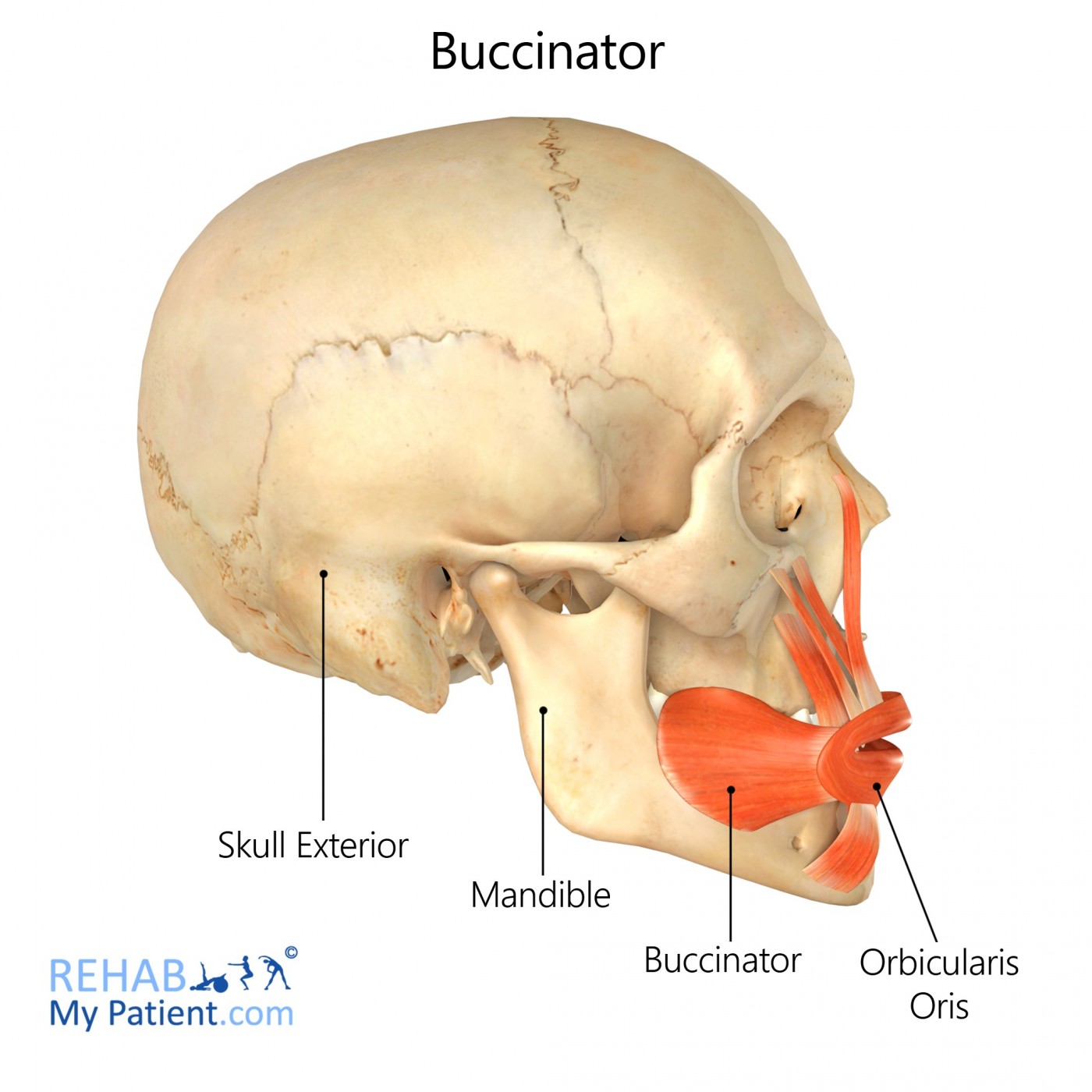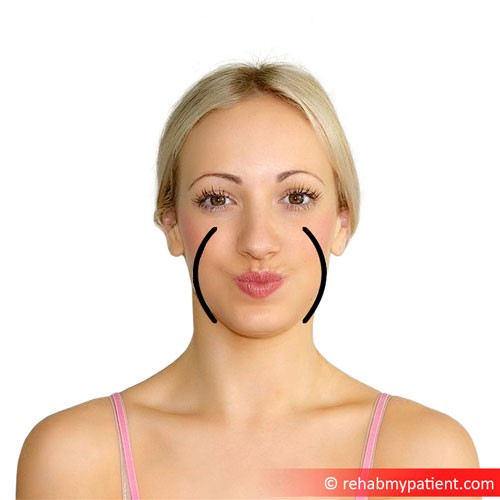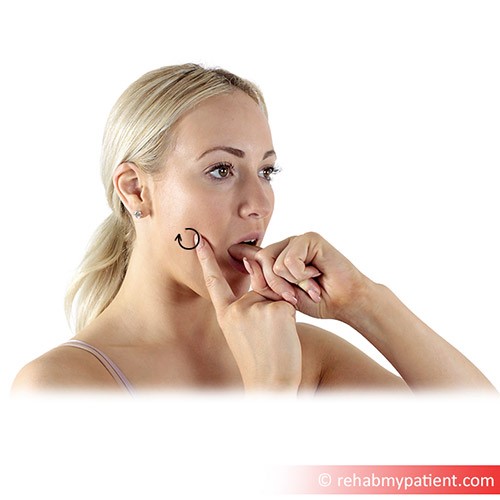
General information
The buccinator muscle is a thin quadrilateral facial muscle which lies on the side of the face near the cheeks between the maxilla and the mandible (the upper and lower jaws). It connects the cheek and jaw bones to the mouth.
Literal meaning
The trumpeter muscle.
Interesting information
The buccinator gets its name from the fact that it is involved in blowing air from the mouth, like when one blows a trumpet. There are two buccinators, one on each cheek. Musicians use the buccinators when playing wind instruments.
Bell’s palsy, a sudden facial paralysis which can affect the whole or a part of the face on one side, can result in buccinator paralysis. With this condition, food can get caught in the cheek of the paralysed side, or may escape from that side of the mouth. Bell’s palsy is caused by damage to the facial nerve which supplies blood to the buccinators. Patients with Bell’s palsy typically recover without treatment within a month or two. Facial exercises can significantly help in facilitating recovery.
Origin
Buccal surface of the alveolar ridges of the maxilla and mandible, adjacent to the molars and from the pterygomandibular raphe.
Insertion
Muscle fibres blend into the modiolus at the angle of the mouth.
Function
The buccinators pull back the angle of the mouth and tense the cheeks so that food can be moved back to the molar teeth and prevent the cheeks from getting pinched. They also help in whistling, smiling and suckling (in babies). The muscle also aids in closure of the mouth.
Nerve supply
Buccal branch.
Blood supply
Buccal artery.

Relevant research
The study, ‘The buccinator during mastication: A functional and anatomical evaluation in minipigs’ conclusively showed that the buccinator’s contraction thickens the cheek. It may also be involved in salivation.
Dutra EH, Caria PH, Rafferty KL, Herring SW. “The buccinator during mastication: A functional and anatomical evaluation in minipigs” Arch Oral Biol. 2010 Sep;55(9):627-38
Buccinator exercise
Facial exercises have been shown to be helpful in treatment of Bell’s palsy. Cynthia Rowland, the author of ‘The Magic of Facial Exercise’ recommends facial exercise to reduce signs of ageing and tighten your face.
Puffa buccinator exercise
Keeping your mouth shut, blow outwards to bulge your cheeks. Hold this position, and relax. Perform ten repetitions, three times per day.

Cheek massage buccinator stretch
This massage is very useful in recovery from Bell’s palsy. Rub the skin on your cheeks down towards your mouth, till you reach the corner of your mouth. Do this for two minutes using your index finger and middle finger.

Open your mouth. With one finger inside and the other outside, massage as much of the cheek and lip area as you can. Continue this for two minutes and then repeat for the other cheek.

Sign Up
Sign up for your free trial now!
Get started with Rehab My Patient today and revolutionize your exercise prescription process for effective rehabilitation.
Start Your 14-Day Free Trial